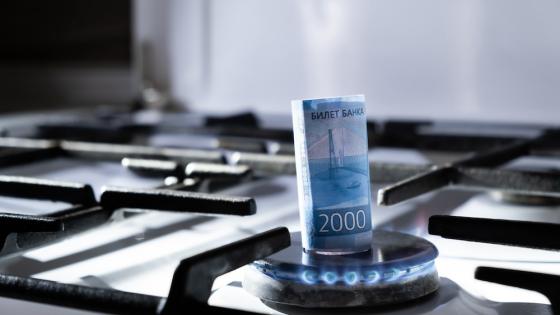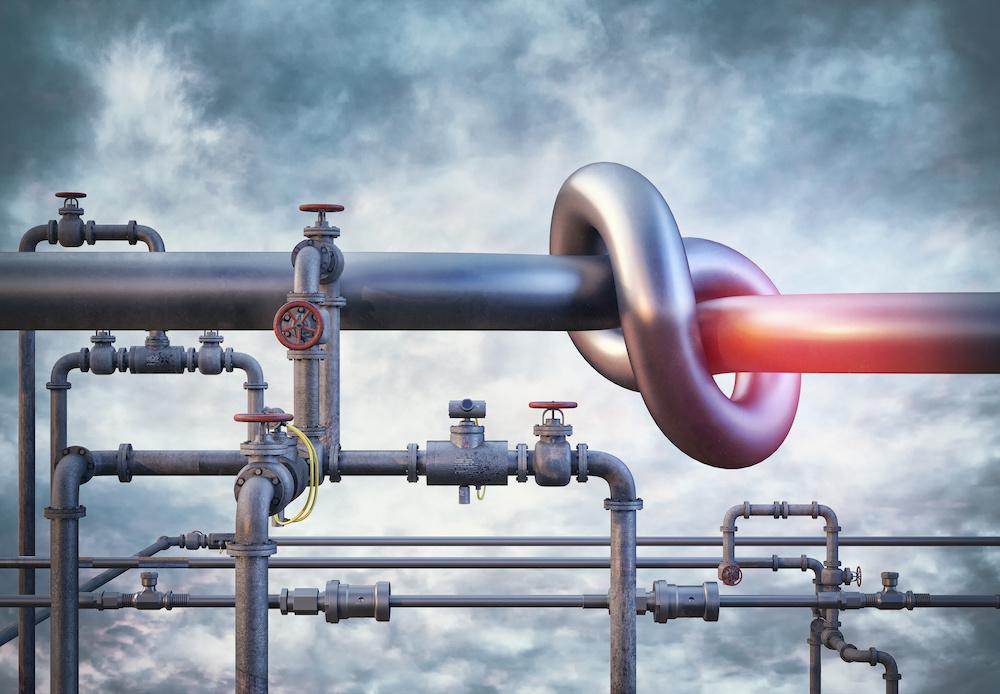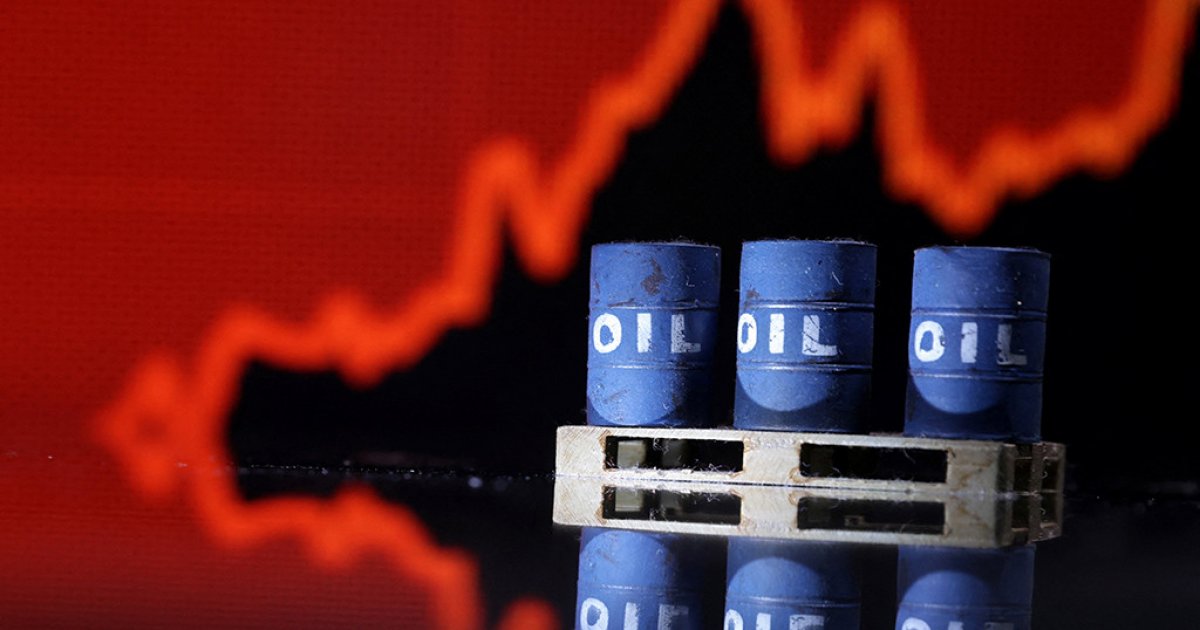Russia Continues To Dominate Energy Dynamics With EU Spending £4.5bn Buying Half of Russia’s LNG Supplies, Indicating It is Not So Easy To Replace Russian Oil Or Gas.
Europe finds itself at a critical juncture, especially after the Russia-Ukraine war, with its reliance on Russian natural gas, thus raising questions about energy security, geopolitical leverage, and the delicate balance of power on the continent. While European nations have sought to diversify their energy sources, Russia's position as the world's leading gas exporter presents a formidable challenge. This dependence has led to intricate negotiations, significant concessions, and even concerns about the misuse of energy as a geopolitical tool.

According to reports, the European Union (EU) allocated over £4.5 billion (€5.3 billion) for the purchase of more than 50% of Russia’s liquefied natural gas (LNG) supplies during the first seven months of this year; this occurred despite previous commitments to reduce reliance on Kremlin-backed hydrocarbons.
The EU accounted for 52% of Russia’s LNG exports, a significant increase from 49% in 2022 and 39% in 2021, thus bolstering one of Russia’s key revenue sources and contributing to funding its military efforts following the invasion of Ukraine.
Surprisingly, some EU member states, including Spain and Belgium, have become even more significant buyers of Russian LNG than before the Ukraine conflict.
/cdn.vox-cdn.com/uploads/chorus_asset/file/24267950/1245369536.jpg)
The Unrelentless Hike
A recent report by Global Witness highlights this trend; Spain and Belgium now rank as the second and third largest buyers of Russian LNG globally, trailing only behind China.
Between January and July 2023, Spain purchased 18% of Russia’s total LNG sales, while Belgium acquired 17%, compared to China’s 20%. In sharp contrast, in the same period in 2021, Spain and Belgium held the fifth and seventh positions in global rankings, indicating a substantial increase in their consumption.
The rising demand for Russian LNG reflects a broader trend of increased purchases across the EU, with member countries collectively consuming 22 million cubic meters, up from 15 million cubic meters during the same period two years ago, representing a 40% surge.
Global Witness based its analysis on Kpler data, estimating EU purchases at £4.55 billion (€5.29 billion) using Russian LNG price estimates from the Centre for Research on Energy and Clean Air; the increase in EU reliance on Russian LNG comes amidst a thriving global LNG trade, with the EU transitioning away from piped gas supplies. Previously, piped gas contributed to nearly 93% of storage capacity.
Nevertheless, this surge in LNG purchases exceeds the global average increase in Russian LNG imports, which stands at six per cent.
Jonathan Noronha-Gant, senior fossil fuel campaigner at Global Witness, expressed concern over the consequences of buying Russian gas, likening it to buying Russian oil as both actions financially support the war in Ukraine.
He urged European countries to align their actions with their condemnation of the war by banning the trade of Russian LNG, which fuels both the conflict and the climate crisis.
In March 2023, EU Energy Commissioner Kadri Simson called on member states and EU companies to halt Russian LNG purchases, while Spanish Energy Minister Teresa Ribera labeled the situation “absurd” and urged Spanish buyers not to enter into new contracts with Russia.

Saying No To Russia
The EU has also joined Western allies, including the US and UK, in imposing sanctions and restrictions on Russian fossil fuel imports from pipelines and seaborne shipments.
Hence, the UK reported 11 consecutive months without coal, oil, or gas imports from Russia in January; however, subsequent analysis revealed increased imports from authoritarian regimes such as Algeria, Bahrain, Kuwait, Libya, Qatar, Saudi Arabia, and the United Arab Emirates.
Previous research by Global Witness indicated that Shell and Total Energies continued to trade Russian LNG following the invasion.
In response, a Shell spokesperson clarified that they had ceased purchasing Russian LNG on the spot market but still had some long-term contractual commitments, which were in accordance with sanctions and relevant laws and regulations.
Further, the spokesperson acknowledged the dilemma of balancing pressure on the Russian government over its actions in Ukraine with the need for stable and secure energy supplies, emphasizing that governments should decide these difficult trade-offs.
No Definitive Plans
The European Union (EU) relies heavily on Russia for nearly 38% of its imported natural gas, a dependence that is poised to increase significantly if the EU continues with its existing energy policies.
These policies include plans to phase out nuclear power in some European countries, reduce coal consumption to lower greenhouse gas emissions, and the depletion of domestic gas sources; hence, if alternative energy strategies are not adopted, the EU’s reliance on Russia could surge to between 50% and 60% of all gas imports within the next two decades.
This growing dependency on Russian natural gas presents a dangerous situation for the EU and greater Europe; while the current EU energy policy focuses on renewable energy targets, energy efficiency, and emissions reduction, it falls short in acknowledging the security risks associated with increasing reliance on Russian hydrocarbons, particularly natural gas.
Europe must embrace such a strategy not only because over-reliance on any single energy source is unsound policy but also because the Russian administration has been actively pursuing the goal of dominating the European energy market for years.
Russian dominance in the European natural gas market would give the Kremlin substantial leverage in its dealings with European neighbours since Europe’s dependence on Russian gas already limits the autonomy of certain European states and threatens European sovereignty.
The Significance of Natural Gas in the Energy Mix
Natural gas holds a critical position in global energy consumption, and Europe is no exception. The EU accounts for 17% of worldwide energy consumption and consumes a similar proportion of global annual natural gas production.
When we break down energy sources in the EU, it consists of oil (43%), natural gas (24%), nuclear (14%), coal (13%), hydroelectric (4%), and other renewable sources such as geothermal, biomass, wind, and solar (2%).
Beyond power generation, many industrial applications rely on natural gas. It serves as the foundation for various chemical products, fertilizers, and pharmaceuticals due to its cost-effectiveness as a butane, ethane, and propane source.
Additionally, it serves as the primary ingredient for various plastics, textiles, and antifreeze. In compressed form, natural gas serves as a fuel for internal combustion engine vehicles, particularly in public buses across Europe, where it offers significant pollution reduction compared to gasoline and diesel fuels.
Europe’s Energy Dependence on Russia
The European Union (EU) heavily relies on just three external gas producers – Russia, Norway, and Algeria.
Russia, providing 37.7% of the EU 27’s total gas imports in 2005, stands as the dominant gas supplier to the continent. This dependence on Russian gas is most pronounced in Eastern Europe, where seven former Warsaw Pact and Soviet Union states rely on Russia for over 99% of their natural gas. Furthermore, Central and Eastern European countries predominantly depend on Russia for most of their natural gas consumption.
Looking ahead 25 years, it’s projected that up to 80% of the EU’s natural gas will be imported, with Russia contributing up to 60% of this, equivalent to one-fifth of the entire EU energy mix in the form of pipeline natural gas.
This calculation does not encompass the energy the EU will import from Russia in the form of oil, estimated to make up another one-tenth of the total energy mix.
Consequently, as the principal price-setter for natural gas worldwide, Russia – supplying one-third of the EU’s energy by 2030 – will be able to wield its energy supplies as tools of control by dictating terms.

Russian Gas vs. Oil
EU diversification away from Russian natural gas is of greater importance than diversification from Russian oil, even though Russia may supply up to 11% of the EU’s overall energy in the form of oil over the next two decades, and this is due to several key factors.
Firstly, Russia’s share of the world’s known oil reserves is estimated to range from 4.5% to 6%. Russia ranks eighth globally in terms of oil reserves, a far cry from its dominant position in the global natural gas supply.
Even with estimates accounting for reserve growth and undiscovered fields, the most optimistic projections place Russia’s oil reserves at 281 billion barrels, representing 9.5% of the world’s oil supply in a best-case scenario.
Accordingly, the U.S. Energy Information Administration anticipates Russia producing around 8.5% of the world’s export oil in 2030. While this capacity is substantial and lucrative, it doesn’t grant Russia a role in setting prices in global markets.
Essentially, European consumers have alternatives to Russian oil if they find Russian terms unfavourable.
Secondly, oil experiences a different price fragmentation and regionalization than natural gas. Oil can quickly and cost-effectively be transported by container ships and can be sold to global markets.
Thus, unloading oil at ports is far simpler than the regasification process required for LNG.
Russia’s prominent position in European gas markets provides it with pricing power and an upper hand in negotiating long-term contracts.

Dependence on Russian Gas in Europe in 2021 by Country
In 2019, several European countries displayed varying levels of dependence on Russian gas, with North Macedonia, Moldova, and Bosnia and Herzegovina relying exclusively on Russia as their sole source of natural gas supply.
Among European nations, Latvia exhibited a high level of dependence on Russian gas, accounting for over 90 percent of its total gas imports in 2021.
In Estonia, the proportion of natural gas sourced from Russia was considerably lower, standing at 12 percent. Overall, Russia’s share of all extra-European Union (EU) gas imports in 2021 amounted to over 39 percent.
Russian Natural Gas Exports
Russia holds the position of the world’s leading exporter of natural gas, surpassing other major exporters such as the United States, Qatar, and Norway.
In 2021, Russia exported a significant volume of natural gas, amounting to 201.7 billion cubic meters through pipelines and an additional 39.6 billion cubic meters in the form of liquefied natural gas (LNG).
This export volume experienced continuous growth from 2014 to 2019. However, in 2020, a four percent decline occurred due to reduced fuel demand resulting from lockdowns and decreased economic activity during the COVID-19 pandemic.
Impact of the War in Ukraine on Russian Gas Exports
The invasion of Ukraine in February 2022 had a substantial impact on Russian gas exports to Europe. In response to the conflict, European countries took measures to decrease their reliance on Russian gas.
Between January 1 and July 15, 2022, Gazprom, the Russian energy company, exported more than 33 percent less gas to foreign markets compared to the same period in the previous year.
Additionally, Germany suspended the certification process for Nord Stream 2, a major gas pipeline project, while Russia ceased all gas deliveries via Nord Stream 1 in September 2022, prior to the detection of leaks in both pipelines.
Notably, gas exports from Russia to India and China did not increase monetarily in July and August 2022 when compared to February and March 2022.
Ukraine as an Example
Ukraine serves as a compelling example of how the Russian government wields its ‘energy weapon’ beyond merely shutting off the gas supply.
In October 2006, the Russian Prime Minister engaged in negotiations with his Ukrainian counterpart, resulting in a series of concessions by Ukraine.
In exchange for a commitment to maintain the gas price below $130 per 1,000 cubic meters, Ukraine agreed to several significant concessions:
- Postponing any referendum on NATO membership.
- Accepting the terms for the continued presence of the Russian Black Sea fleet in Sevastopol until 2017, with the possibility of extending the lease.
- Continuing to utilize RosUkrEnergo as a transit partner for another five years.
- Agreeing to receive Turkmen gas exclusively through Russia.
This example highlights the coercive power of Russian energy dependence. Ukrainian officials evidently feared the economic repercussions of paying full market prices for gas, leading them to make concessions that compromised their sovereignty. Even decisions related to collective security and the stationing of foreign troops took a backseat to these concessions.
The Last Bit, Europe’s intricate relationship with Russian gas, as revealed through its energy dependence, export dominance, and geopolitical manoeuvres, paints a multifaceted portrait of a region grappling with energy security and political autonomy.
While the continent endeavours to reduce its reliance on Russian gas, the intricate web of energy dynamics is not easily unravelled. Russia’s position as the leading gas exporter provides it with substantial influence, often wielded with both subtlety and coercion.




